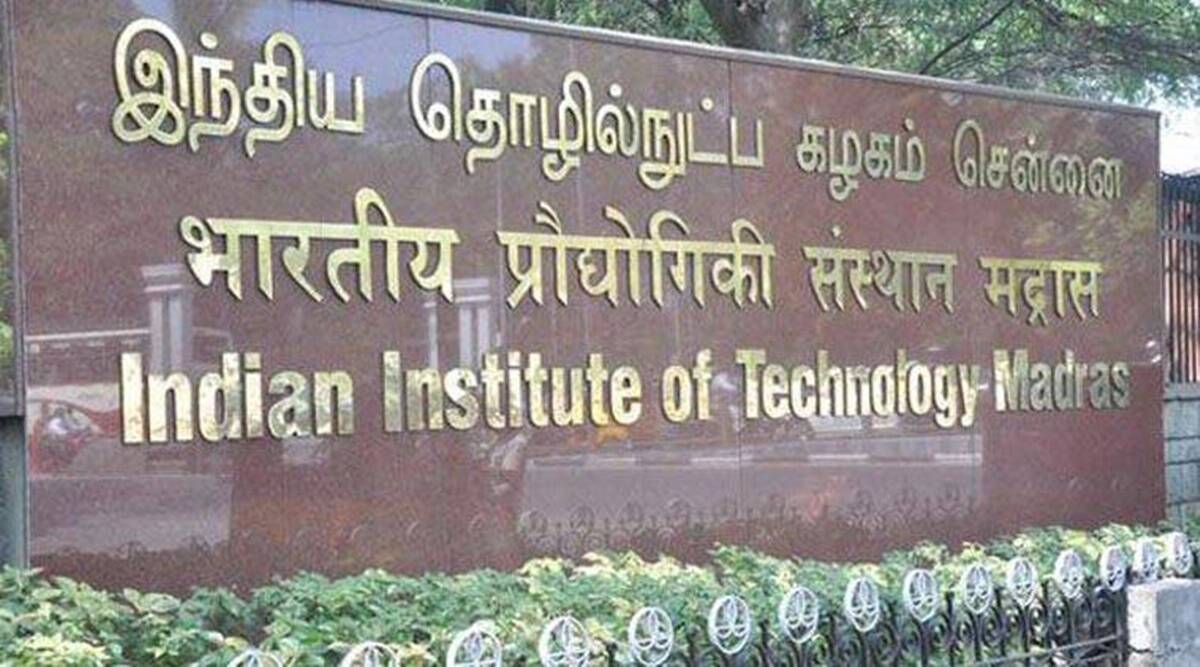 IIT-Madras topped the overall category for the fourth consecutive year, and in engineering for the seventh straight year. (File Photo)
IIT-Madras topped the overall category for the fourth consecutive year, and in engineering for the seventh straight year. (File Photo)LED BY IIT-Madras, the Indian Institutes of Technology continue to dominate the country’s higher education landscape, according to the National Institutional Ranking Framework (NIRF) 2022 released Friday.
Be it engineering education, management or research, the premier institutes figured prominently across categories in the rankings released by Education Minister Dharmendra Pradhan in the presence of University Grants Commission (UGC) chairperson Prof M Jagadesh Kumar and AICTE chairman Prof Anil Sahasrabuddhe, among others.
IIT-Madras topped the overall category for the fourth consecutive year, and in engineering for the seventh straight year. Director Prof V Kamakoti told The Indian Express that gaining the Institute of Eminence (IoE) status has boosted research work in IIT-Madras, helping it retain pole position.
“But we need to improve our student faculty ratio. We are aggressively trying to get good faculty. This is important because more faculty implies more students, more research, more outreach, more ideas, more projects. We will try to push it faster,” he said.
Subscriber Only Stories
“The second part is perception, which is a very subjective matter. And we should make outreach and get globally recognised like world reputed institutes. In a way, NIRF is also helping us improve the perception factor,” Prof Kamakoti said.
The Indian Institute of Science (IISc), which topped the latest round of QS rankings among Indian institutes, was placed second in the NIRF rankings like last year. The slots from third to seventh have been secured by IIT-Bombay, IIT-Delhi, IIT-Kanpur, IIT-Kharagpur, IIT-Roorkee and IIT-Guwahati, in a repeat of 2021, followed by AIIMS and Jawaharlal Nehru University (JNU).
Apart from the dominance of older institutes, the performance of newer IITs stands out in the latest round of the rankings, which has entered its seventh year. IIT-Jodhpur improved its rankings from 43 to 30, IIT-Mandi rose to 20 from 41, while the Palakkad and Tirupati campuses broke into the top 100 category (overall), managing 68th and 56th spots.
The top-ranked private institutions are Amrita Vishwa Vidyapeetham (16), Manipal Academy of Higher Education (17), Vellore Institute of Technology (18), Birla Institute of Technology & Science-Pilani (32), Kalinga Institute of Industrial Technology (34), S.R.M. Institute of Science and Technology (36), Amity University (42).
IISc, meanwhile, topped the universities category for the seventh consecutive year and stood first in the research institutions category for the second consecutive year. AIIMs occupied the top slot in the medical education category for the fifth straight year, while IIM-Ahmedabad remained the best institute in the management segment.
The National Law School of India University, Bengaluru, retained the first position in law.
The list for colleges show five from Delhi among the top 10: Miranda House (1), Hindu College (2), LSR (5), Atma Ram Sanatan Dharma College (7), Kirori Mal College (10). Three colleges from Tamil Nadu — Presidency College (3), Loyola College (4) and PSGR Krishnammal College for Women(6) — also featured in the 10.
The other two slots were taken by St. Xavier’s College (8) and Ramakrishna Mission Vidyamandira (9), both based in West Bengal.
The parameters factored in while preparing NIRF are teaching, learning and resources (30%), research and professional practice (30%), graduation outcomes (20%), outreach and inclusivity (10%), and perception 10%.
The top 100 names include 40 centrally-funded technical institutes and universities, 26 state universities, 24 deemed universities and six private universities.
“Unlike global rankings that gives disproportionate weightage to perception and internationalization (in terms of international students and international faculty), NIRF relies on ranking based on data, which is more objective, especially in a large higher education system like India, where perception data alone can be misleading and amenable to manipulation,” stated the report.
A total of 4,786 unique institutions submitted 7,254 applications for rankings under overall or domain-specific categories.
Pradhan said that going ahead, accreditation and assessment shall be mandatory for higher education institutions.
“Only those Universities/ Colleges which have NAAC grading or NIRF ranking will be eligible for inclusion in the list maintained by the UGC under Section 12 B of the UGC Act, 1956 for receiving financial assistance,” he said, adding that from next year NIRF ranking categories will also include “innovation and entrepreneurship”.
“Soon, there will be a system where each school is also accredited. We will take state governments on board. Parents will know the standing of the school where the child is being admitted,” he said.
- The Indian Express website has been rated GREEN for its credibility and trustworthiness by Newsguard, a global service that rates news sources for their journalistic standards.

